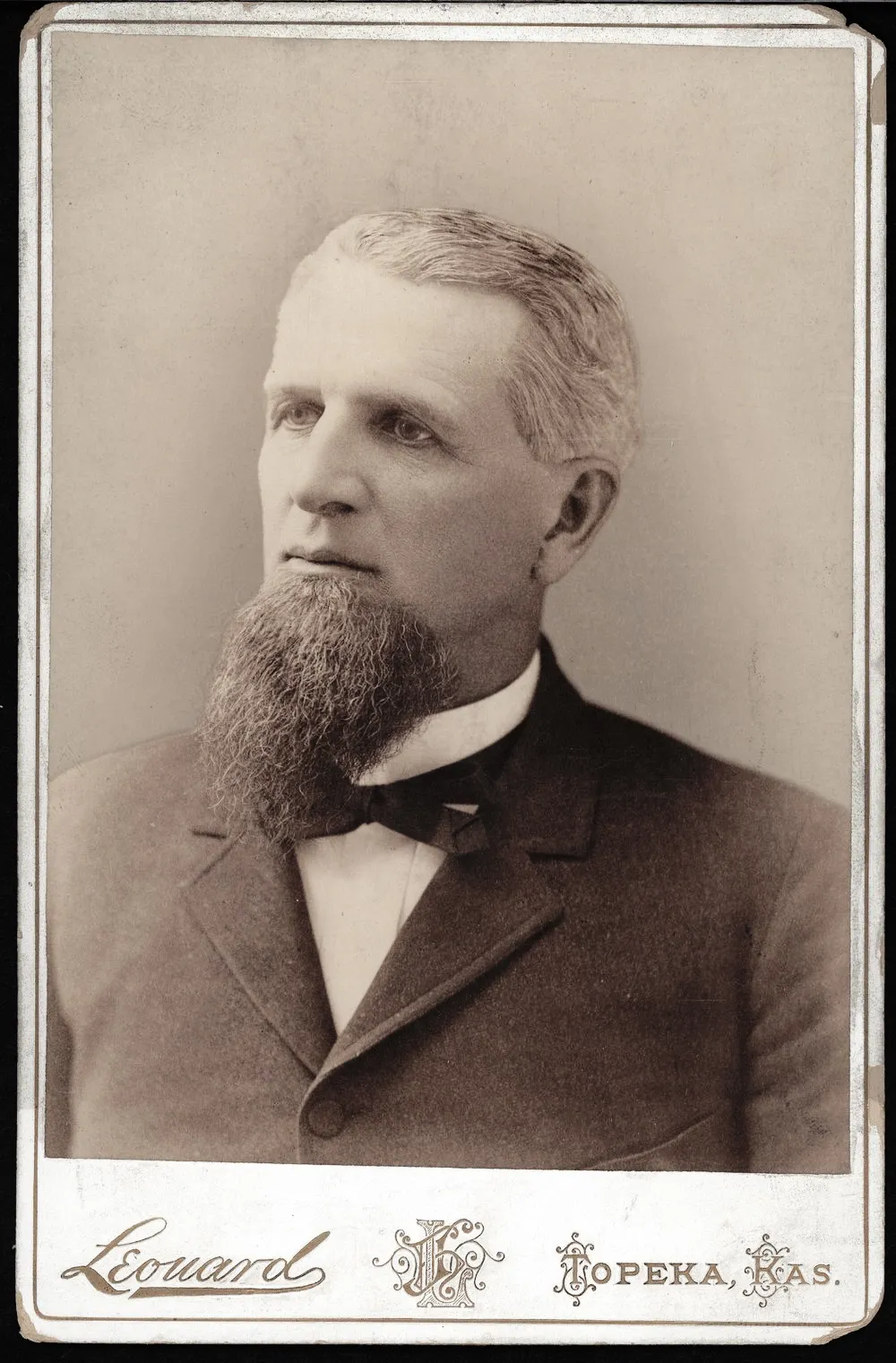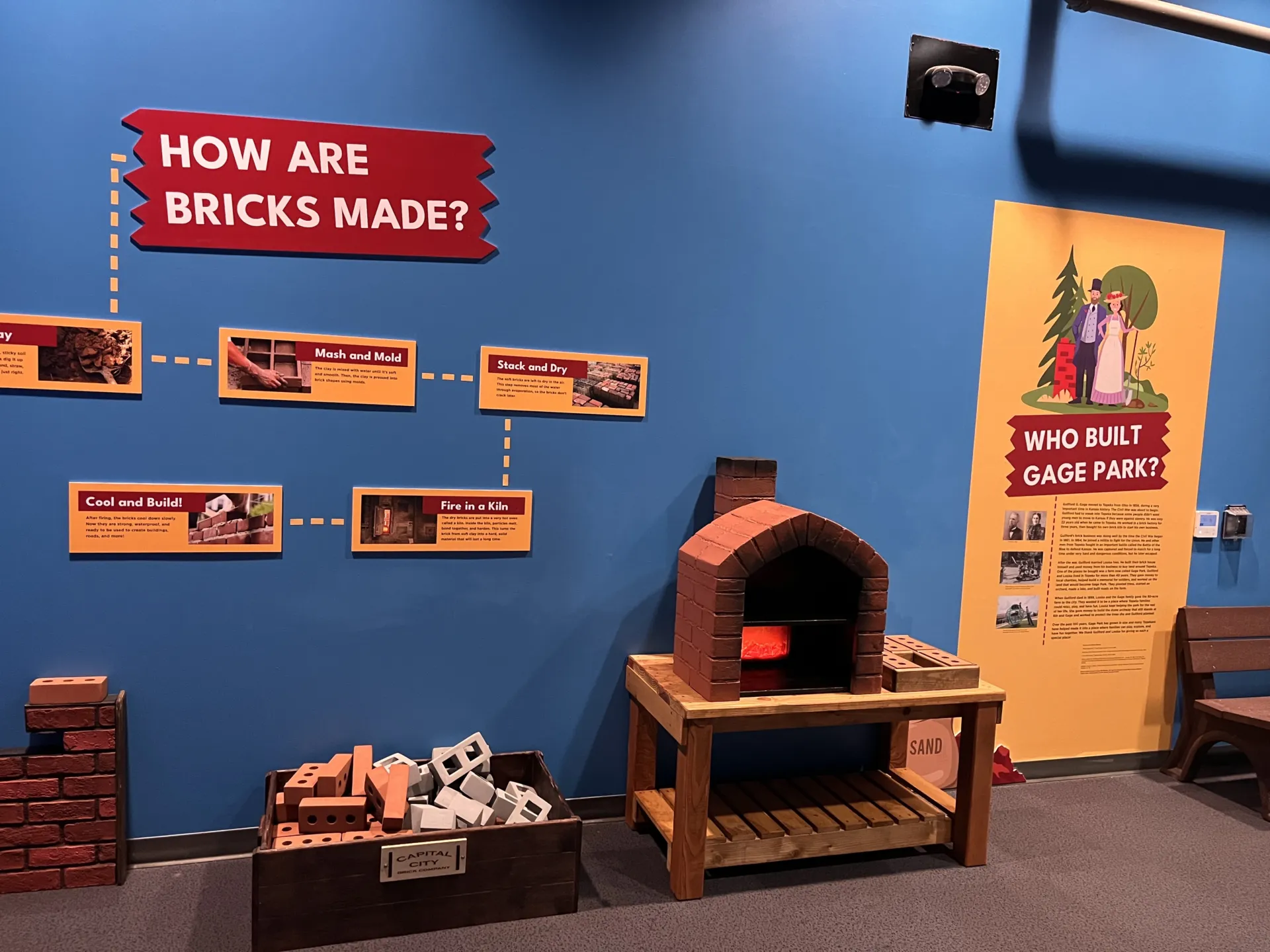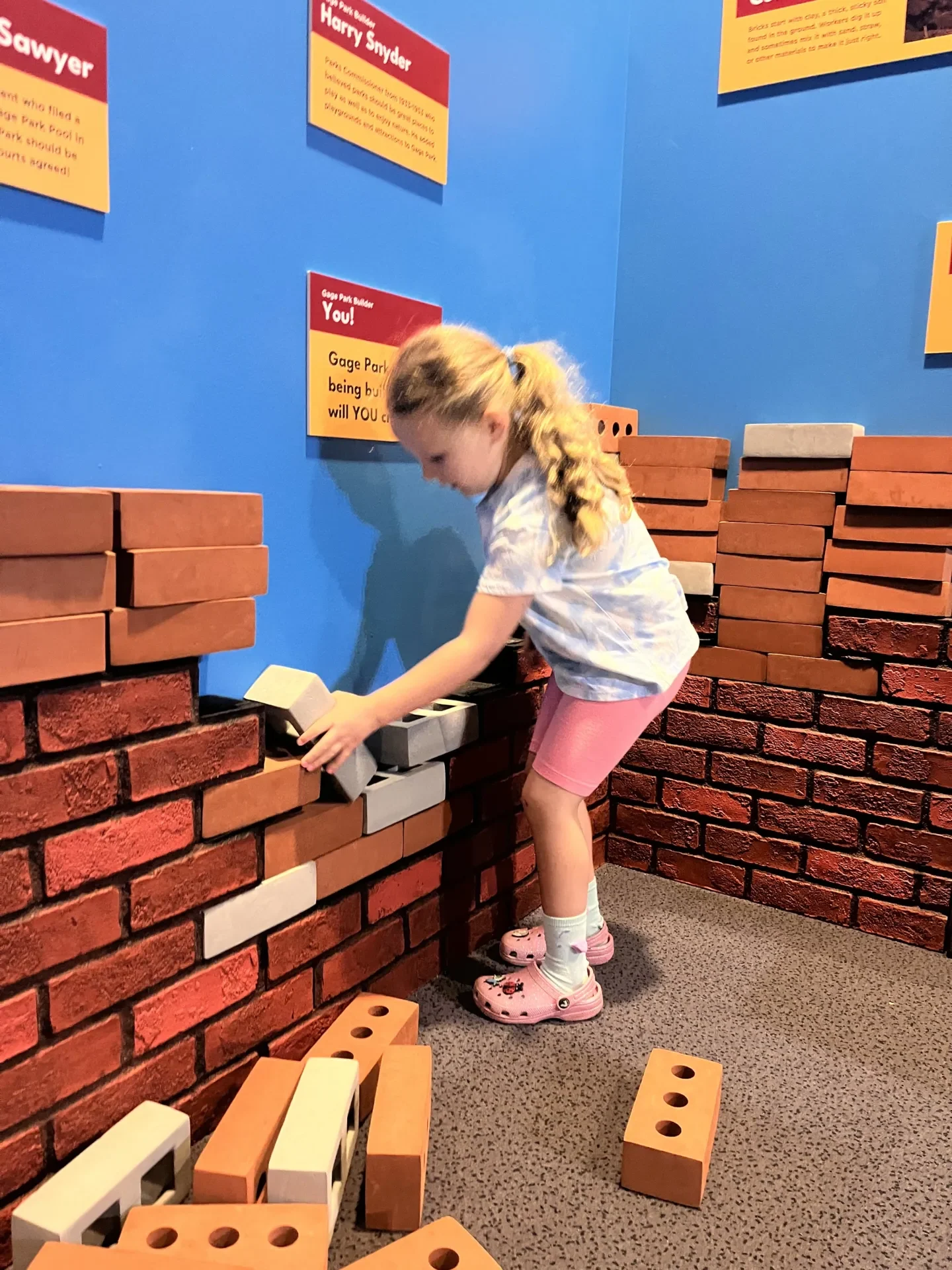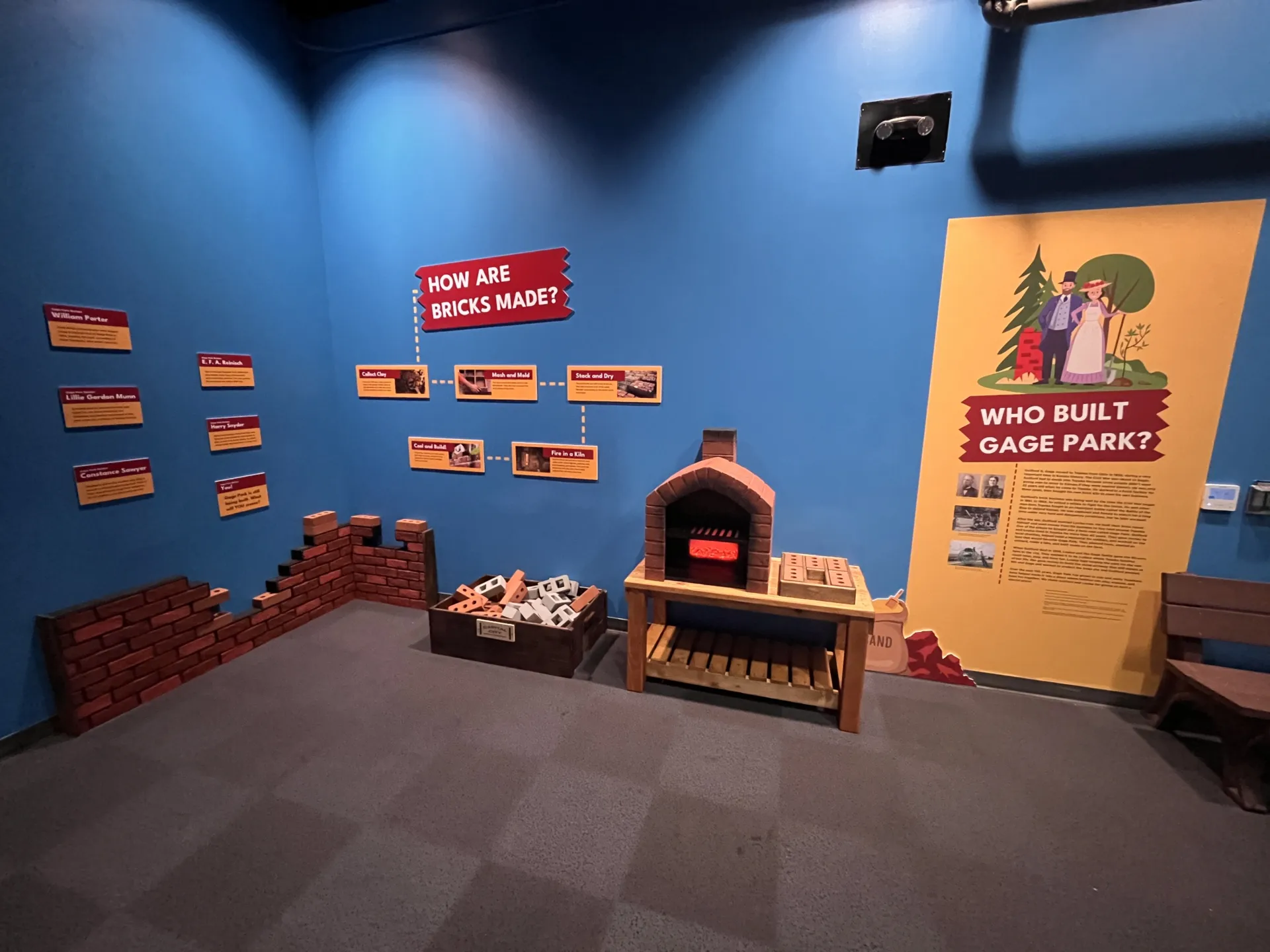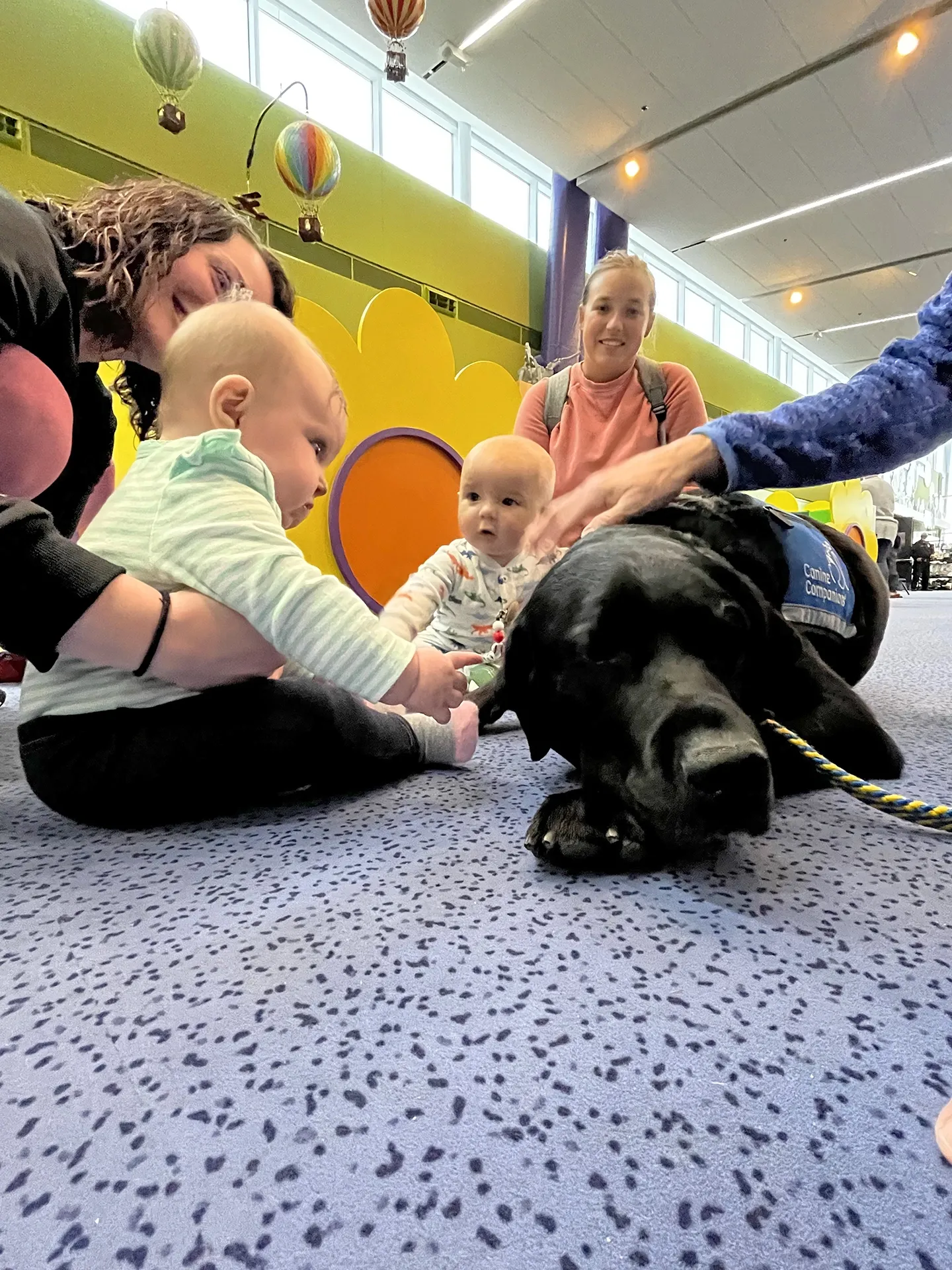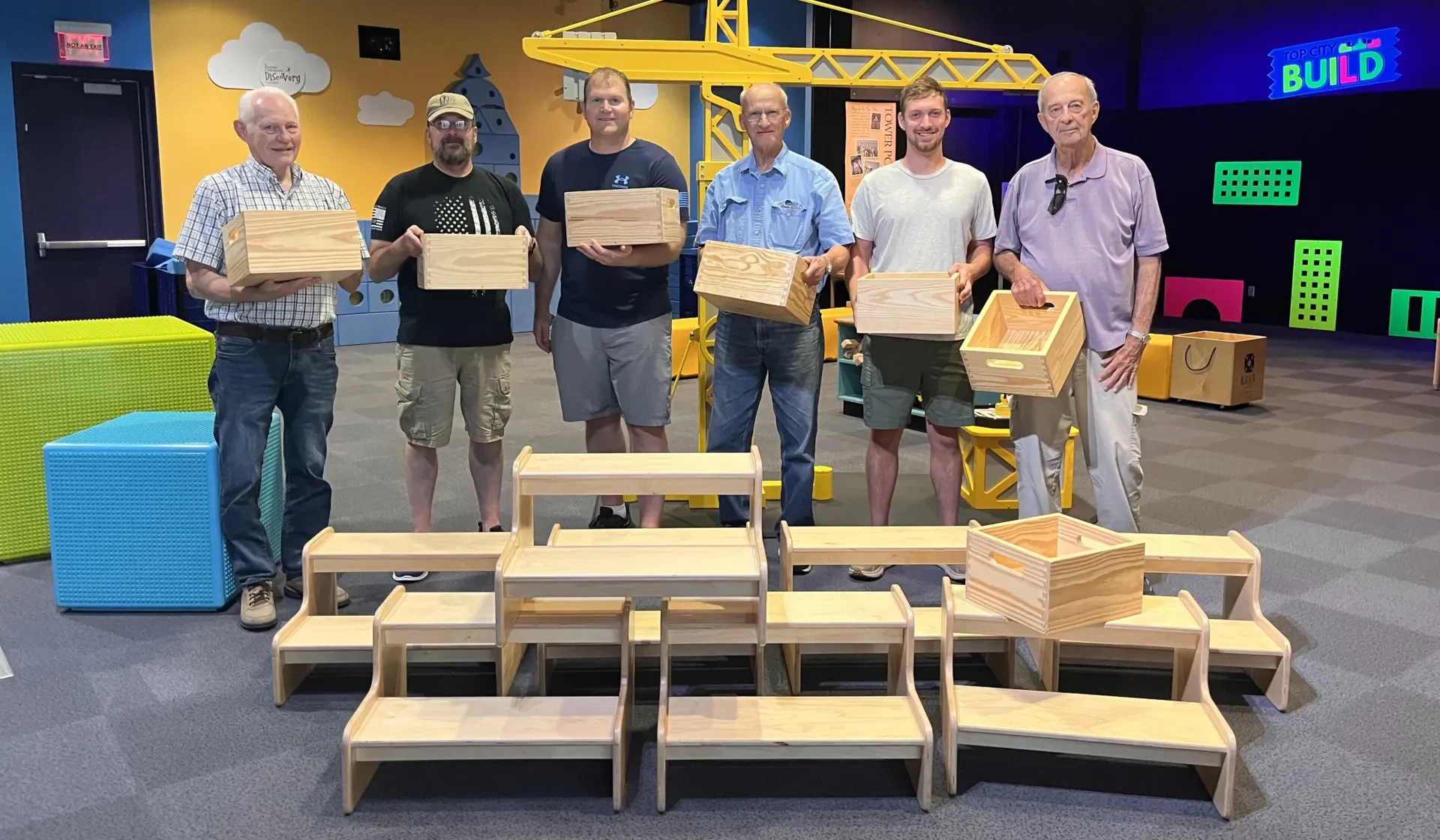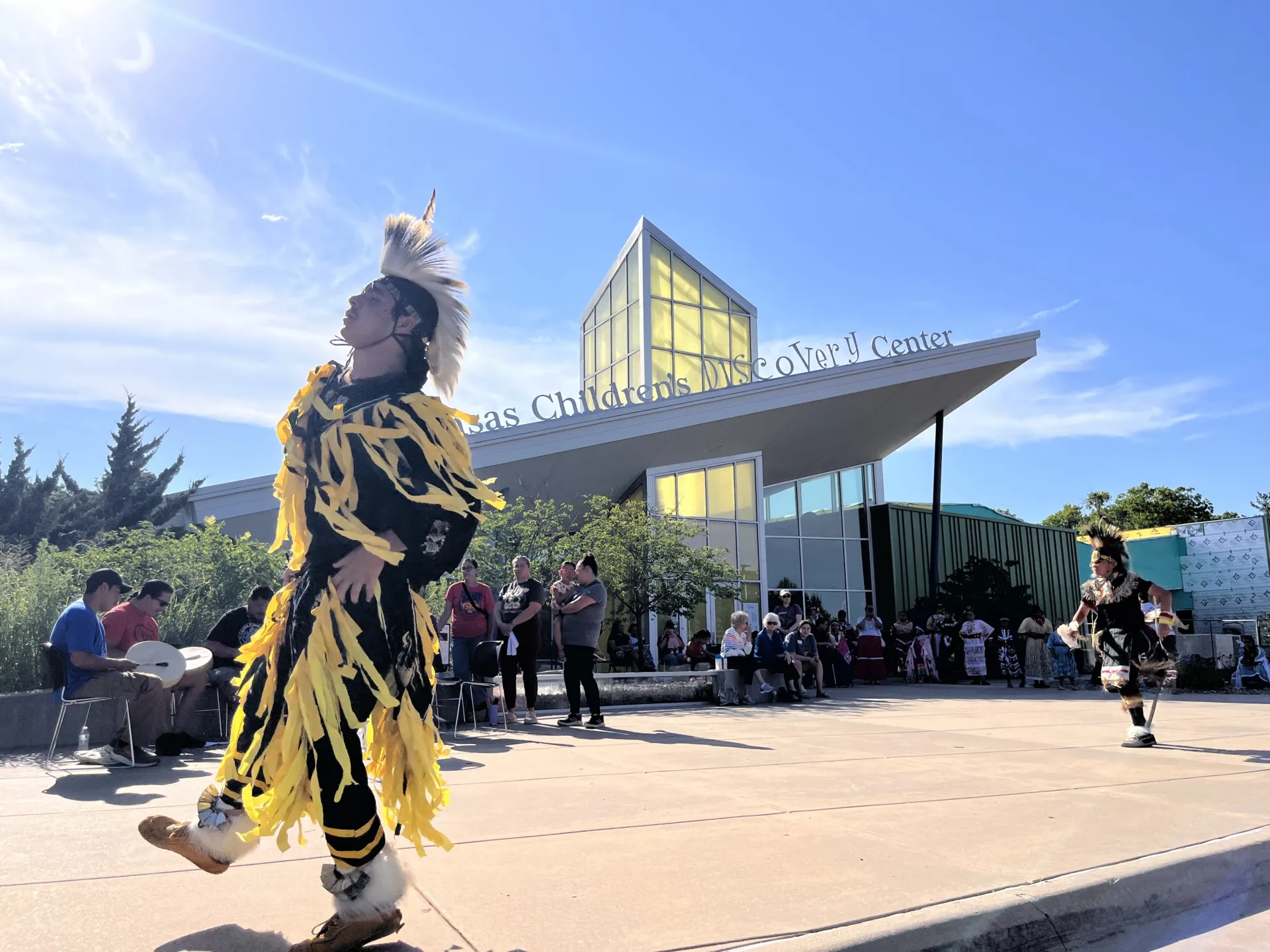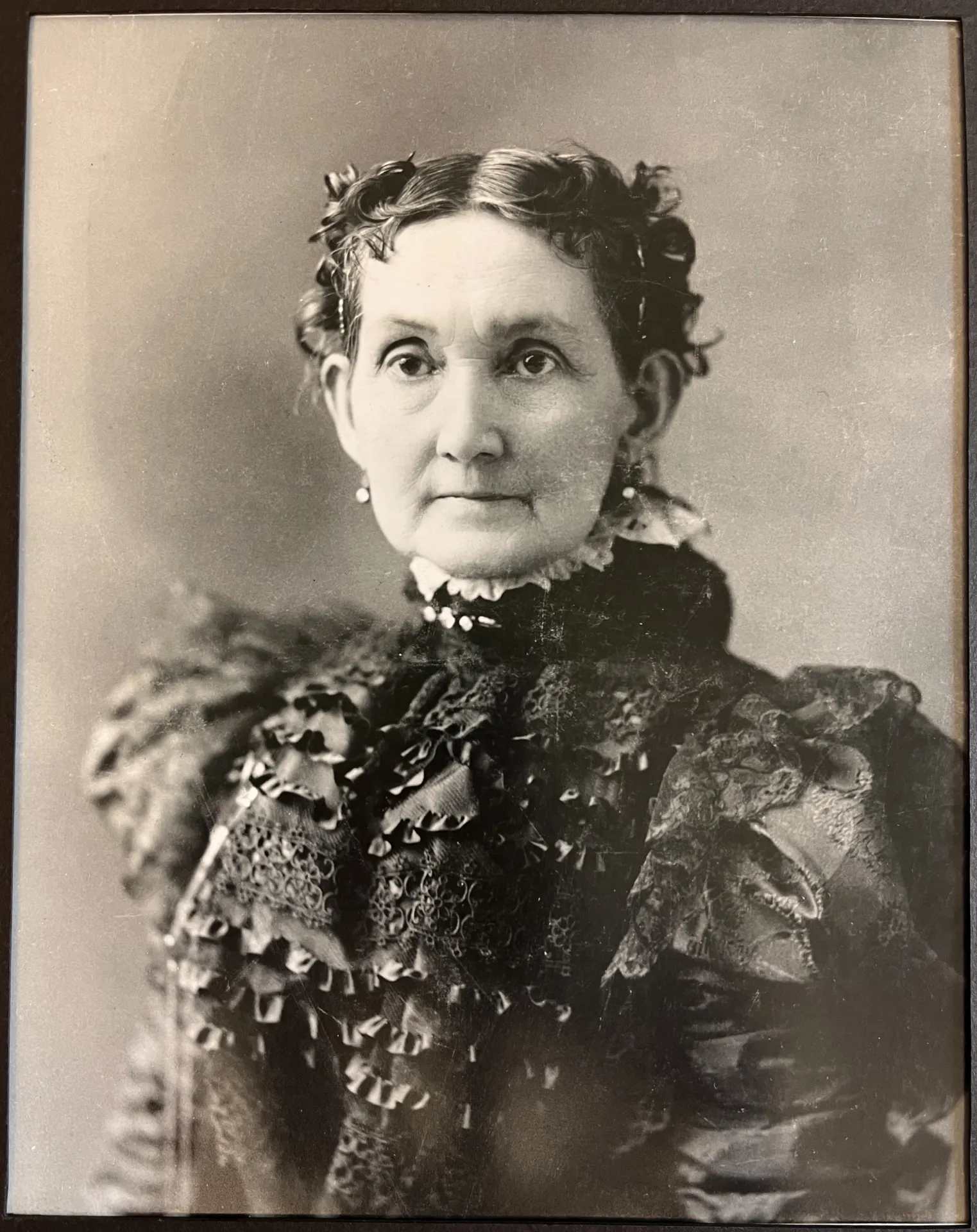
Top City Build tells the story of Topeka’s beloved Gage Park.
The Top City Build exhibit explores more than just how towers are made, it invites visitors to consider how communities are constructed. The story of Gage Park in Topeka, where the Kansas Children’s Discovery Center sits since opening in 2011, is a fantastic lens through which visitors can learn how public spaces are created and improved. Two interactive spaces in the exhibit share Gage Park history.
Who Built Gage Park?
Guilford G. Gage moved to Topeka from Ohio in 1856, during a very important time in Kansas history. The Civil War was about to begin. Guilford had to sneak into Topeka because some people didn’t want young men to move to Kansas if they were against slavery. He was only 22 years old when he came to Topeka. He worked in a brick factory for three years, then bought his own brick kiln to start his own business.
Guilford’s brick business was doing well by the time the Civil War began in 1861. In 1864, he joined a militia to fight for the Union. He and other men from Topeka fought in an important battle called the Battle of the Blue to defend Kansas. He was captured and forced to march for a long time under very hard and dangerous conditions, but he later escaped.
After the war, Guilford married Louisa Ives. He built their brick house himself and used money from his business to buy land around Topeka. One of the places he bought was a farm now called Gage Park. Guilford and Louisa lived in Topeka for more than 40 years. They gave money to local charities, helped build a memorial for soldiers, and worked on the land that would become Gage Park. They planted trees, started an orchard, made a lake, and built roads on the farm.
When Guilford died in 1899, Louisa and the Gage family gave the 80-acre farm to the city. They wanted it to be a place where Topeka families could relax, play, and have fun. Louisa kept helping the park for the rest of her life. She gave money to build the stone archway that still stands at 6th and Gage and worked to protect the trees she and Guilford planted.
Over the past 100 years, Gage Park has grown in size and many Topekans have helped made it into a place where families can play, explore, and have fun together. We thank Guilford and Louisa for giving us such a special place!
Gage Park Builders
- William Porter: First Parks Commissioner who helped bring trolley service to Gage Park in 1914, making the park accessible to most Topekans, who didn’t own cars.
- E. F. A. Reinisch: City Landscape Designer from 1900-1929 who helped make Gage Park more beautiful with world-class gardens. The rose gardens he envisioned are named after him.
- Lillie Gordon Munn: Donated land to expand the park and funds for the Munn Memorial, the limestone and bronze monument at the park entrance, a tribute to Kansas history.
- Harry Snyder: Parks Commissioner from 1933-1953 who believed parks should be great places to play as well as to enjoy nature. He added playgrounds and attractions to the park.
- Constance Sawyer: Washburn University student who filed a lawsuit to desegregate Gage Park Pool in 1952. She believed Gage Park should be for all children, and the courts agreed!
- You! Gage Park is still being built. What will you create?
Sources and Further Reading
“About Gage Park.” Topeka State Journal, 14 June 1899.
Bird, Roy. They Deserved a Better Fate: The Second Kansas State Militia Regiment and the Price Raid, 1864.
“Life Work Ended.” Topeka State Journal, 20 May 1899.
Steele, James W. The Battle of the Blue of the Second Regiment K.S.M., October 22, 1864: The Fight, the Captivity, the Escape as Remembered by Survivors and Commemorated by the Gage Monument at Topeka, Kansas.
Wallace, Doug W., editor. A Park in the Country: Gage Park’s Century. Shawnee County Historical Society Bulletin, no. 76.
Special thanks to Devin Cooper, Bill Riphahn, Topeka and Shawnee County Public Library, Shawnee County Parks and Recreation, and the Kansas Historical Society.

